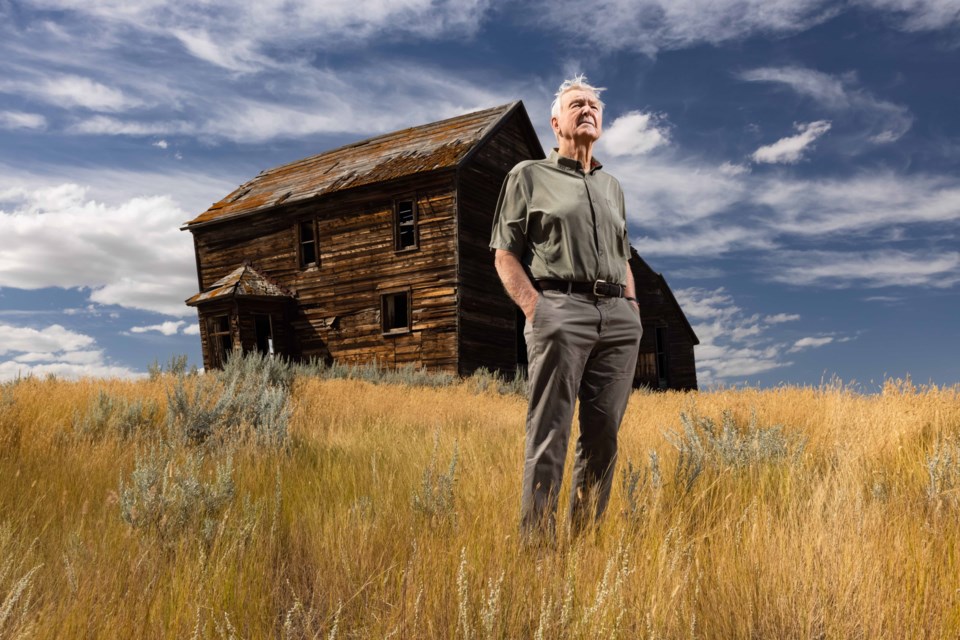Anyone who's driven across the prairies has seen the dilapidated shacks far-off in a field: buckled barns and weathered wood houses that look haunted, ready to topple over, or both. It's a good bet few have thought to venture inside, but not so for Calgary photographer Robert Scott.
The Manitoba native was first drawn to run-down roadside relics some 15 years ago, when a prairie storm forced him from his motorcycle and into an abandoned structure for shelter, camera in hand. Flooded with childhood memories of the 'haunted houses' he and friends once scared themselves inside of--the strange sounds, musty smells of damp wood and plaster, heart-pounding adventure--Scott says being in another such dwelling made it all come rushing back to him.
"I took one picture and that started a dialogue between my camera and abandoned places, and their histories too," he said. "It then became barns and houses, junkyards, vehicles in a farmer's field, even pioneer cemeteries or forgotten headstones on a property. There were stories behind all these things. Whose grave is it? Who used to live here, and why did they leave?"
Describing what he does as reverse forensics or 'backwards history', Scott searches the Internet and/or local land titles offices for details on who once owned a given plot of land. "Many communities in Alberta have written their history; I'm glad they did because it helps in my research," he said.
Scott's sleuthing usually leads to names of children or grandchildren, which then leads to making contact and then to taking a photo of a descendent in front of the old property. He's already posted a handful of photo essays online, but Scott says his project will soon include a photo history book, documentary and possible web series. A project on women and ranching is in the works next.
"I feel a sense of urgency because the buildings are falling or being torn down. Vehicles on farms are being pulled off, graves are covered over--there was a lot more of them ten years ago, across Alberta and into Saskatchewan," he said. "The people I encounter have 'lived a life', with amazing stories. One man recounted how his aunt was accidentally shot and killed by her brother, who was cleaning his 12-gauge shot gun in the kitchen of the old house when it went off."
Scott tells the story of Lyla Rutherford (nee Wenzel), now 82 but six years old when she first went to the schoolhouse just north of Oyen (near Medicine Hat). Being there brought back mostly fond memories for her, Scott says of the photo shoot, though as Lyla walked the grounds, she remembered feeling unsettled on the first day of school when she went to the outhouse, lifted the lid and a cat leaped out at her.
"On video, Lyla tells how older boys used to have to make a fire in the schoolhouse stove before everyone else arrived for the day, and that names and initials written in chalk in the school attic are still there," he said.
Coming back to the property near Medicine Hat was memorable for Ron Thorson too. The 87-year-old retired farmer grew up on a 4,400-acre cattle and grain farm in the 30s and 40s, in a two-storey former rooming house named after the homesteaders who moved the structure from its original spot near the train tracks in 1912.
Thorson says seeing bits of old wallpaper and the old barn "that looks like it exploded from a big wind," brought back memories of the house he said had "no insulation, no electricity and an outhouse I sure didn't regret leaving". The Bow Island resident was reminded of how his mother would bang a broom handle on the ceiling to wake he and his brother for chores and school, or how the pair would lay on the living room floor to listen to the weekly Lone Ranger radio program--even that the boys used to run outside in their underwear whenever there was a rainstorm.
"The schoolteachers lived with us too--we had an apartment space above our living room--and they would walk to school with us, 3/4 of a mile across the fields," he said. After eventually taking over the farm, the Thorsons (Ron, wife and four children) left Hickmore House in 1961 to farm irrigation.
"My dad built a great root cellar near the house too, and I can remember that one especially cold winter when all my mom's canning froze down there. Mom canned everything--meats, all the garden vegetables--she was so upset."
Thorson says he loves the photos Scott took of his trip back to the farm, adding "Kids want to remember; they want to know about their parent's lives."
Interest in abandoned properties isn't unique to Scott. The photographer runs Abandoned Photo Tours, taking small groups onto farms (with permission) for workshops. For more, see abandonedphototours.ca



